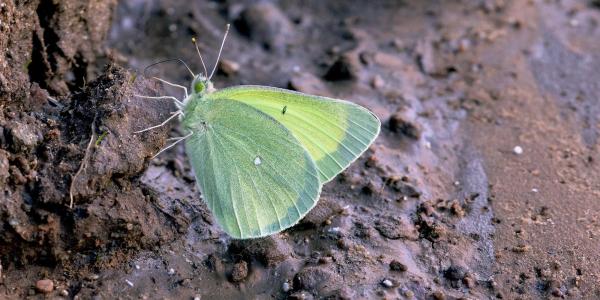With pendant urns, this perennial lofts its seeds with feathery plumes
I frequently visit the Vail Pass rest area to see which flowers are in bloom and who is pollinating them. In early summer, a pinkish red or rose stand of blooms caught my eye — this was my first encounter with prairie smoke, Geum triflorum, a distinctive native wildflower. A month later, local wildlife photographer Bob Maynard led me to a flowering population of prairie smoke in Colorado’s West Elk Mountains.
From a basal sprig of leaves, a rose-colored, hairy flower stalk stood 12-16 inches tall to support three rose pendant blooms.

Prairie smoke first blooms as pendant vases, but as seeds mature the flower turns upward, seeds produce feathery plumes to loft its seeds. Photo by Jeff Mitton.
The literature mentions that a flower stalk has three to five blooms, but in my experience, I have only seen these wildflowers with three. Each bloom has five long bracts that splay out from the five sepals (leaves that appear to be petals) that form a pendant urn.
The urn’s small opening consists of a tightly packed series of concentric layers: sepals on the outside, then petals, then stamens (male parts of the flower) with pistils (female part of the flower) in the center. Petals, which barely protrude from the sepals, are cream to yellow and may be suffused with pink or purple.
Bumblebees are the most efficient pollinators of prairie smoke. Smaller bumblebees may attempt to squeeze inside the flower, but larger bumblebees grasp and hang from the dangling urn with their front legs and vibrate their wings at a specific frequency that makes the flower vibrate, shaking pollen from the anthers.
The pollen cascades from the bloom onto the bumblebee’s thorax and abdomen and the bee then grooms the pollen from its body into corbicula, special pouches on its legs used to carry pollen. When the bee grasps the bloom, pollen from previous flowers is transferred inadvertently to the pistils, pollinating the flower.
Other insects chew through the base of the flower to harvest nectar, but these cheaters take the reward without delivering pollen.
The flowers change orientation from pendulous to upright after pollination and as the seeds develop. It is at this time that prairie smoke earns its name. As the seeds develop, the sepals and petals spread to form an open cup, the styles elongate and elaborate hairs protrude sideways, forming feathery plumes to catch the wind and disperse seeds. The cups of the feathery plumes sways easily in the wind, evoking the likeness of small columns of smoke.
In the book Wild About Wildflowers the authors liken maturing flowers to “miniature versions of Dr. Seuss’ truffula trees.” Other common names, including pink plumes, old man’s whiskers, torch flower and long-plumed purple avens, also describe the plumed flowers.
The literature presents prairie smoke as common and widespread, native to all of the western states north to the Yukon Territory, plus to the northern states in the Great Plains, with isolated populations in Michigan and New York.
I am a little puzzled that I did not notice these until this summer. Within this wide geographic range, prairie smoke grows in prairie, montane, subalpine and tundra environments, though it seems restricted to montane and subalpine environments in Colorado. It is a long-lived perennial that spreads by rhizomes.
While prairie smoke’s flower form, specifically the feathery plumes, is unusual, it is not unique. Three other species produce feathery plumes to loft their seeds, and all three are woody shrubs that grow from 5-9 feet tall. All four species are native to at least the four-corner states, and all four are in the rose family.
But none of the others has the pendant urns produced by prairie smoke. Alder-leaf mountain mahogany (Cercocarpus montanus) bears trumpet-style red flowers that flare at the end, with protruding golden stamens and a long, thin style. Both Apache plume (fallugia paradoxa) and cliffrose (Purshia stansburiana) have the simple rose cup of white petals. So, while all four species disperse seeds from flowers that resemble Seuss’ truffula trees, none of the other species could be confused with prairie smoke.



